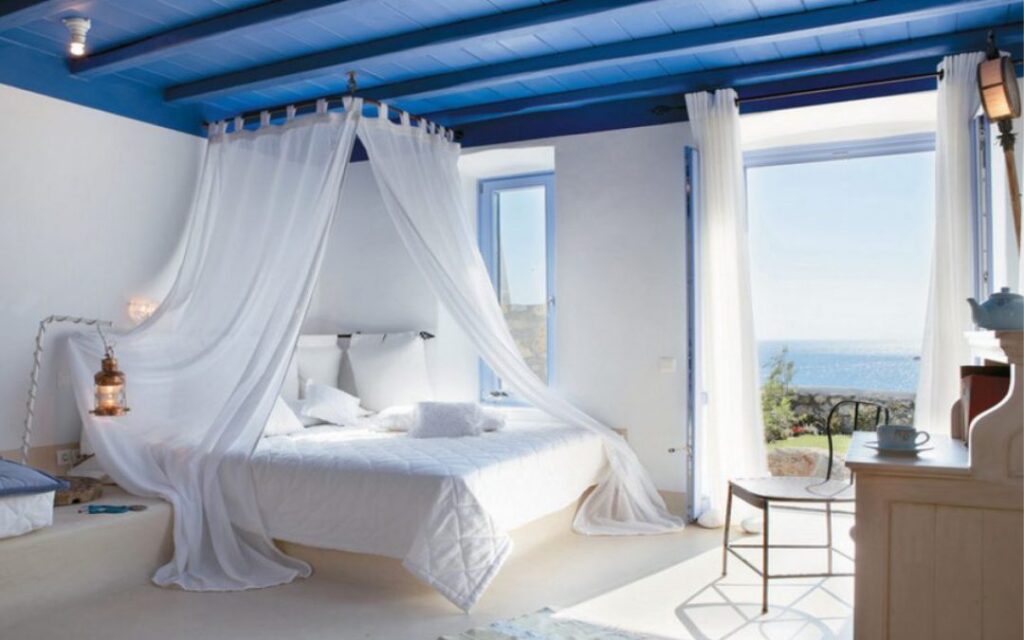In our last post we have talked about the industrial style referring to the “genius loci”, the “spirit of the places” of Roman antiquity.
If, compared to the industrial style, the reference could appear profane, in the case of the Mediterranean style the comparison is certainly more substantial.
In fact, in the industrial style the connection with the place is related to the specific function of a space and its past as a “unit”. In the case of the Mediterranean style, it is about the very identity of a place in a broader sense.
The Mediterranean style goes beyond the limits of the home, because it aims to integrate into a landscape and represent in an architectural and stylistic way a peculiar geography, climate and atmosphere.
It is therefore not a “globalist” style.
On the contrary, we are facing a style that recalls a typical form of construction and furniture of the countries that overlook the Mediterranean: Italy, Spain, Greece, but also the south of the Balkan peninsula and the countries of North Africa such as Morocco.
Therefore, it is a recognizable style in a fairly large area, which nevertheless adapts to the specific place through the details.
The choice of the Mediterranean style is, in some way, a non-choice, an anti-individualist choice. It is a way of being and participating in the community to which one belongs, a “choral staging”, a collective show, generally consisting of low houses with a lot of vegetation.
ELEMENTS OF THE MEDITERRANEAN STYLE
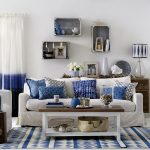
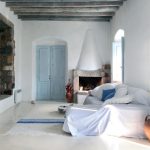
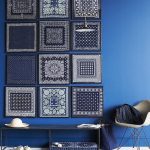
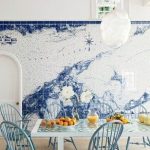
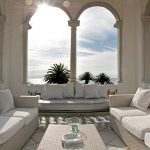
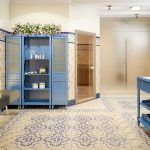
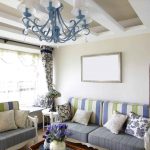
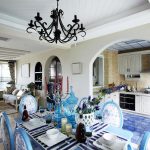
In practice, the Mediterranean style is usually characterized by white and blue / light blue / turquoise, often accompanied by ocher.
It conveys a feeling of brightness outside and inside but, unlike the minimalist style, the spaces are not usually “cold”.
Decoration plays an important and delicate role. A decisive customization cannot be lacking and bright colors are an important complement, but the atmosphere should not be overloaded, rude, oppressive either.
The harmony of the elements should convey freshness, lightness, a feeling of blissful well-being.
And it is redundant to reiterate that the environment is typical of marine areas, with light colors that help the environment not to absorb heat and reflect light.
AVOID METAL Y PLASTIC, PREFER PREDILIGERE ROUGH STONE, PLASTER AND LIGHT WOOD
The characteristic elements, in fact, are:
- tiles (in Maoiolica) with cheerful decorations
- hand painted ceramics
- curtains (in cotton or linen)
- colored striped cushions perhaps more vivid
- elements in stone and plaster
large openings - a patio or living room with wicker chairs
- raw light wood tables
- trim straw elements
- shells and beach objects
- Glass bottles
- flowers and plants (aromatic)
- lanterns and candles (scented)
- mirrors, lamps and frames with wrought iron
- poorly decorated and quite simple furniture
- exposed beams.
A “maritime” look from which cold and “urban” materials such as metal and plastic are forbidden, as much as the dark tones that oppress the environment and the use of a too visible technology as a furniture element.
The result will be an “holiday” atmosphere that, if you are lucky, will be able to accompany you throughout the year.
And that – we dare to add with a pinch of pride – is especially dear to us coming from southern Italy and working for years here in Alicante.

